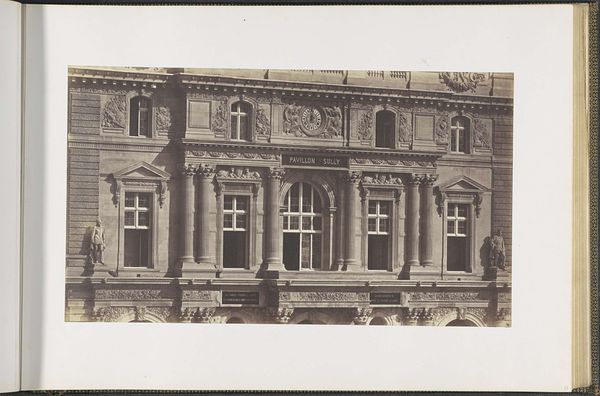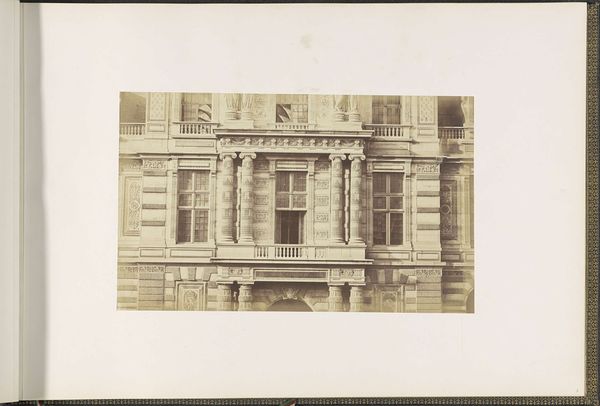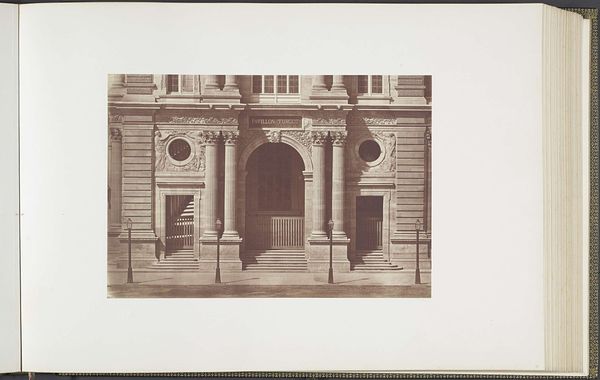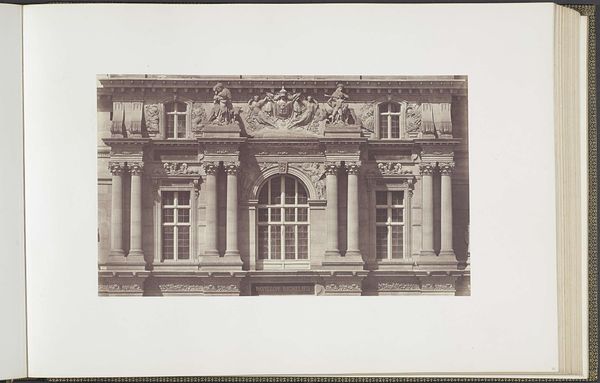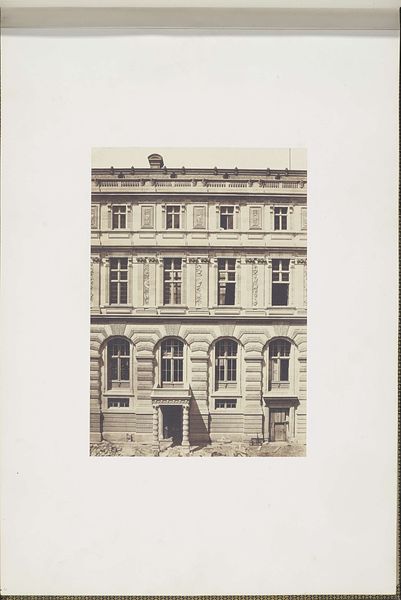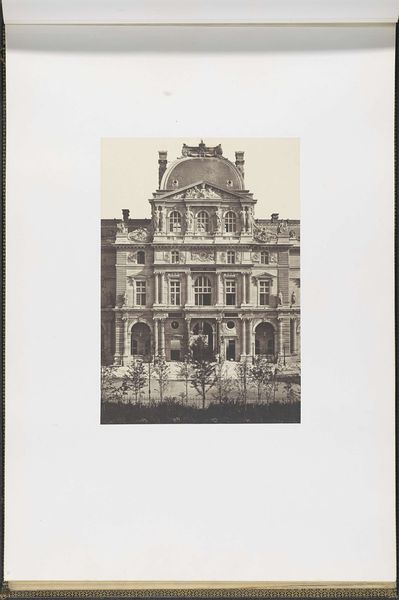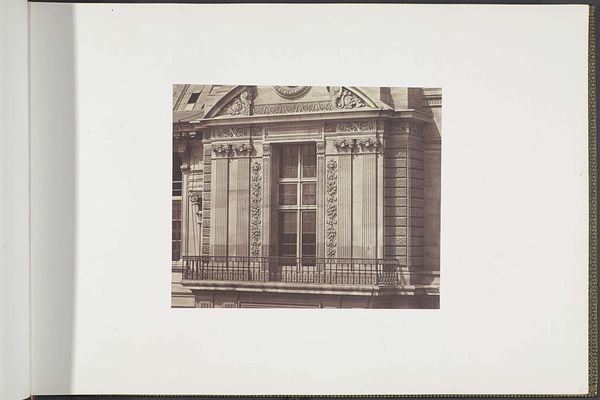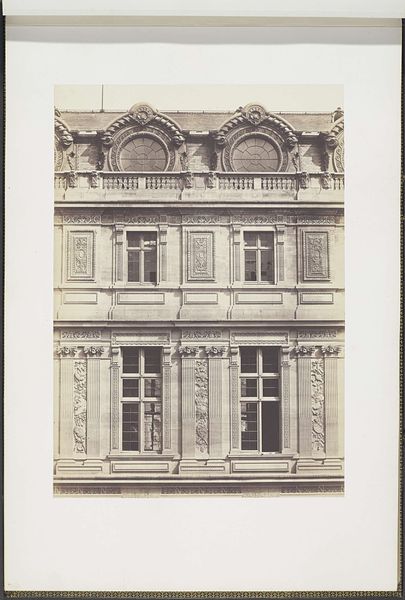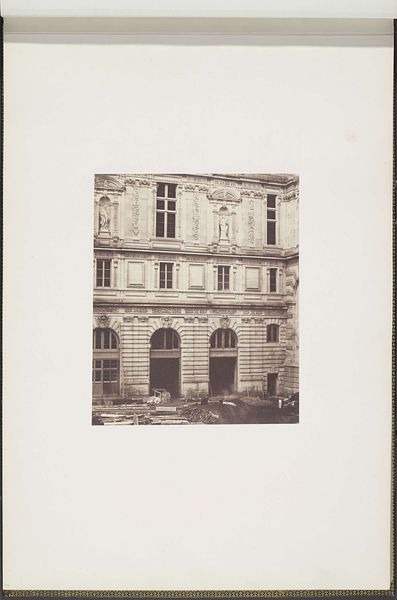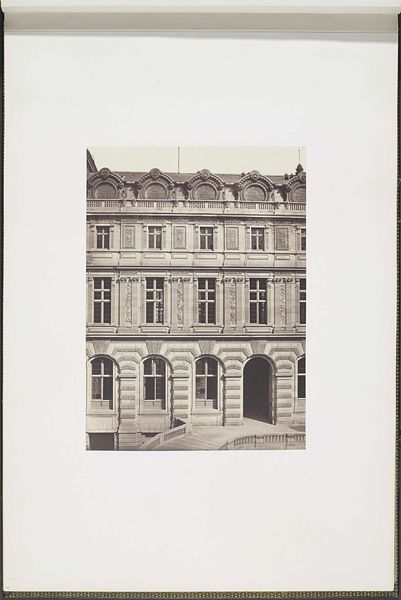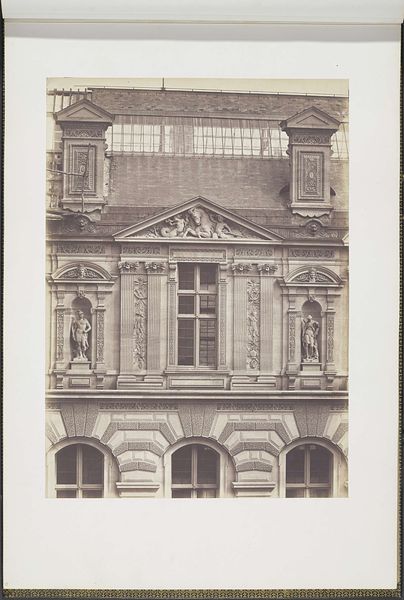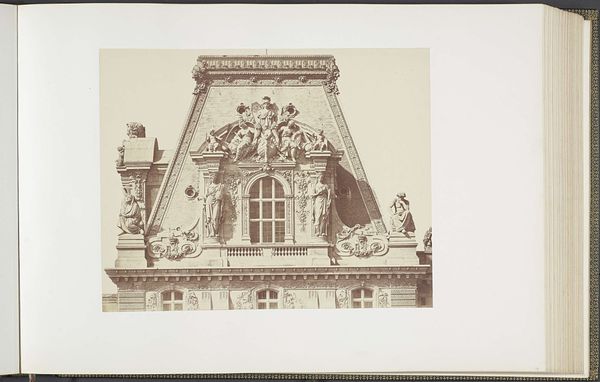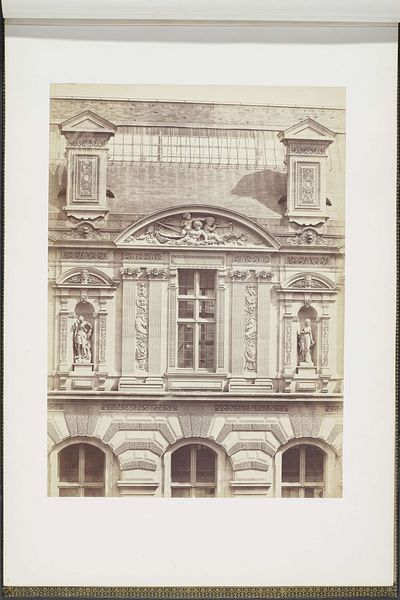
Eerste en tweede etage van het Pavillon Turgot van het Palais du Louvre c. 1857
0:00
0:00
edouardbaldus
Rijksmuseum
photography, albumen-print
#
neoclacissism
#
photography
#
cityscape
#
albumen-print
#
building
Dimensions: height 378 mm, width 556 mm
Copyright: Rijks Museum: Open Domain
Edouard Baldus created this albumen print titled "Eerste en tweede etage van het Pavillon Turgot van het Palais du Louvre" sometime in the mid-19th century. It captures a section of the Louvre Palace, highlighting its architectural details. The image is not just a record of a building. It's a statement about power, culture, and the institutions that uphold them. Baldus, working in France, presents the Louvre not merely as a structure, but as a symbol of national identity and artistic heritage. The photograph emphasizes the building’s classical design, echoing the values of the French Academy and its influence on artistic taste. To truly understand this image, we need to consider the historical context in which it was made. This was a time of massive urban and social change in Paris. Photography played a key role in documenting and shaping perceptions of these transformations. The use of photography to document national monuments also reflects the rise of heritage preservation as an institutional practice. By exploring archives and delving into the cultural politics of 19th-century France, we can better appreciate how Baldus's photograph contributes to our understanding of art’s role in shaping public memory.
Comments
No comments
Be the first to comment and join the conversation on the ultimate creative platform.
